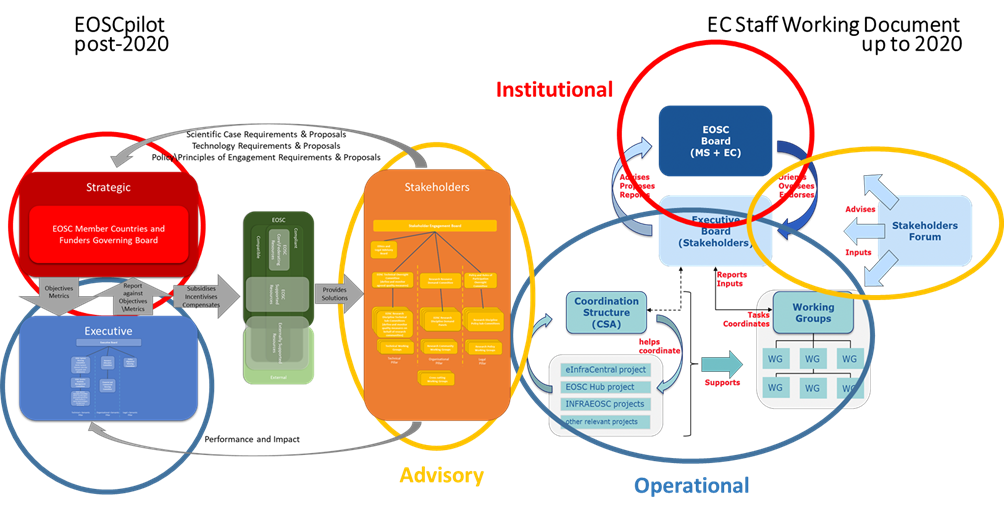
EOSC Post-2020 Governance Structure Proposed by EOSCpilot
As part of its pioneering work for the European Open Science Cloud (EOSC), the EOSCpilot project has proposed a post-2020 governance structure to succeed the current interim governance structure in place.
The objective of EOSCpilot's Governance Work Package (WP2) was to design and trial a stakeholder-driven governance framework with the involvement of research communities, research institutions, research infrastructures including e-infrastructures, and research funding bodies.
Momentum for governance
Governance is a critical topic in the EOSC's development as it will shape and oversee future development of the European Open Science Cloud, and will identify appropriate federated governance model(s) and decision-making structure for it
As part of that objective, a framework for a stakeholder driven governance and decision-making structure for an established EOSC (i.e. post 2020) was put forward in EOSCpilot in its Deliverable 2.6: Governance Framework for the European Open Science Cloud (D2.6).
This follows the implementation phase governance structure as detailed in the European Commission’s staff working document "Implementation Roadmap for the European Open Science Cloud".
The document also outlines the key differences to be addressed in moving from the implementation phase governance to this framework, and the reasons behind these.
Natural evolution
The D2.6 outlines a stakeholder driven governance framework for the long-term management and oversight of EOSC. It forms a natural evolution of the implementation phase governance structure established by the European Commission by:
- Extending the Executive to include standing groups performing important roles in terms of Legal (including policy), Organisational (including funding), Semantic (in terms of operational management), and Technical interoperability (as defined by the European Interoperability Framework) of EOSC resources
- Establishing a shadow structure to the Executive within the Stakeholder forum, to ensure that the Executive delivers an EOSC fit for its end users, and to develop metrics and policies which meet user requirements and demands
- Moving time-based working groups from the Executive to the Stakeholder forum as the focus of these working groups change from initial implementation issues to focus on the longer term future development and evolution of EOSC
